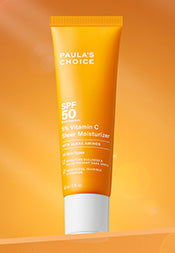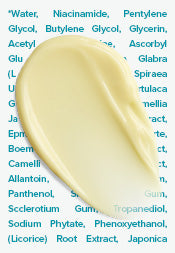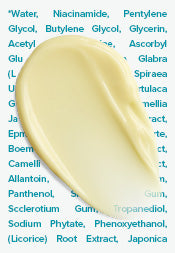Skin Pigmentation Causes: Dealing with Sunspots on the Body

We tend to worry more about the visible changes sun damage causes to our face. But in truth, we should be just as concerned about the changes sun exposure causes to the rest of the body. If you’re seeing white spots, white patches, light spots, dark spots, or other skin pigmentation age spots from sun exposure, here’s what you need to know to improve their appearance.
Skin concern #1: White spots on skin
One of the typical skin concerns, white spots on skin tend to show up on the sun-exposed areas of the arms and legs. They differ from brown spots not only in colour, but also in why they form.
What causes these skin pigmentations? Brown spots are due to excess pigmentation, but white spots occur when the skin’s pigment is destroyed from years of sun exposure.
Board-Certified Dermatologist Dr. Corey L. Hartman notes that there are different categories of white patches on skin known as, “idiopathic (no one knows where it comes from), guttate (confetti-like), and hypomelanosis (less pigment).” It remains a mystery as to why some areas of skin get white spots while others darken.
Although white pigmentation spots on the skin might seem like a cause for concern, they’re harmless. Unfortunately, they cannot be eliminated. As Dr. Hartman goes on further to say that “there are only a few ways to get the lost pigment back. Microneedling combined with or without prescription topical bimatoprost has emerged as a safe and effective way to improve the condition, but it’s not cheap.”
However, you can prevent more white pigmentation spots from appearing by consistently applying a broad-spectrum sunscreen rated SPF 30 or greater on your skin. You can also take other sun-protective measures, like wearing ultraviolet-rated clothing and, of course, NEVER getting a tan, whether indoors or outside.
You can try to make the white spots visually blend with the surrounding skin by using a self-tanning product, but you must apply it only to the white spots. Use a cotton swab or makeup brush to apply a tiny amount of self-tanner directly on the white spot; then wait a few hours and see how the colour looks. Reapply as needed to maintain the colour balance.
Skin concern #2: Brown spots on skin
Brown spots, another type of skin concern, are often accompanied by other signs of sun damage, like dull, ashy-looking skin. These pigmentation spots are easier to deal with as there are both over-the-counter and in-office dark spot removers from a dermatologist that can improve their appearance—possibly fading them to a significant degree. We discuss those in the section below.
You can dramatically improve the tone and texture of sun-damaged skin with an alpha hydroxy acid lotion like the Skin Revealing Body Lotion 10% AHA. If raised bumps and enlarged pores are also a concern, try a beta hydroxy acid body lotion like the Weightless Body Treatment 2% BHA. Those are the fastest and most gentle ways to get your glow and smooth texture back. Dr. Hartman notes that, “if all topical options fail, there are several lasers and energy-based devices that can help.”
Dark spot remover: How to get rid of sunspots on skin
Products to brighten dull skin and improve the look of sunspots include those with vitamin C like the C15 Super Booster, niacinamide like the 5% Niacinamide Body Serum, cysteamine, tranexamic acid, and azelaic acid. It’s important to know that sunspots on skin can be stubborn. You might find—and research agrees—that the best approach to address sunspots is over-the-counter skin care plus in-office treatments from a dermatologist. This “combination therapy” often includes prescription creams along with a series of laser or other light-emitting treatments that target the source of the brown spots that are deeper in the skin.
So, when to apply sunscreen? Always, always, always protect exposed skin from UV light with a broad-spectrum sunscreen rated SPF 30+ and body sunscreen or lotion with SPF all year-round. This is essential to the success of any product for fading dark spots and other skin pigmentation. Plus, it keeps more age spots from showing up.
Learn more about the causes of skin pigmentation such as brown spots and how to get rid of these dark brown spots at home.
References for this information
StatPearls, September 2021, ePublication
Current Problems in Dermatology, 2021, pages 62–71
Skin Therapy Letter, January 2016, pages 1–7
The Journal of Clinical and Aesthetic Dermatology, August 2014, pages 13–17
Journal of the European Academy of Dermatology and Venereology, May 2012, ePublication; and September 2010, pages 1026–1030
International Journal of Dermatology, July 2011, pages 798–805; and February 2010, pages 162–166
Photochemistry and Photobiology, 2008, pages 539–549











